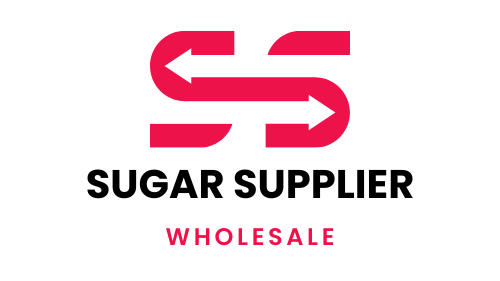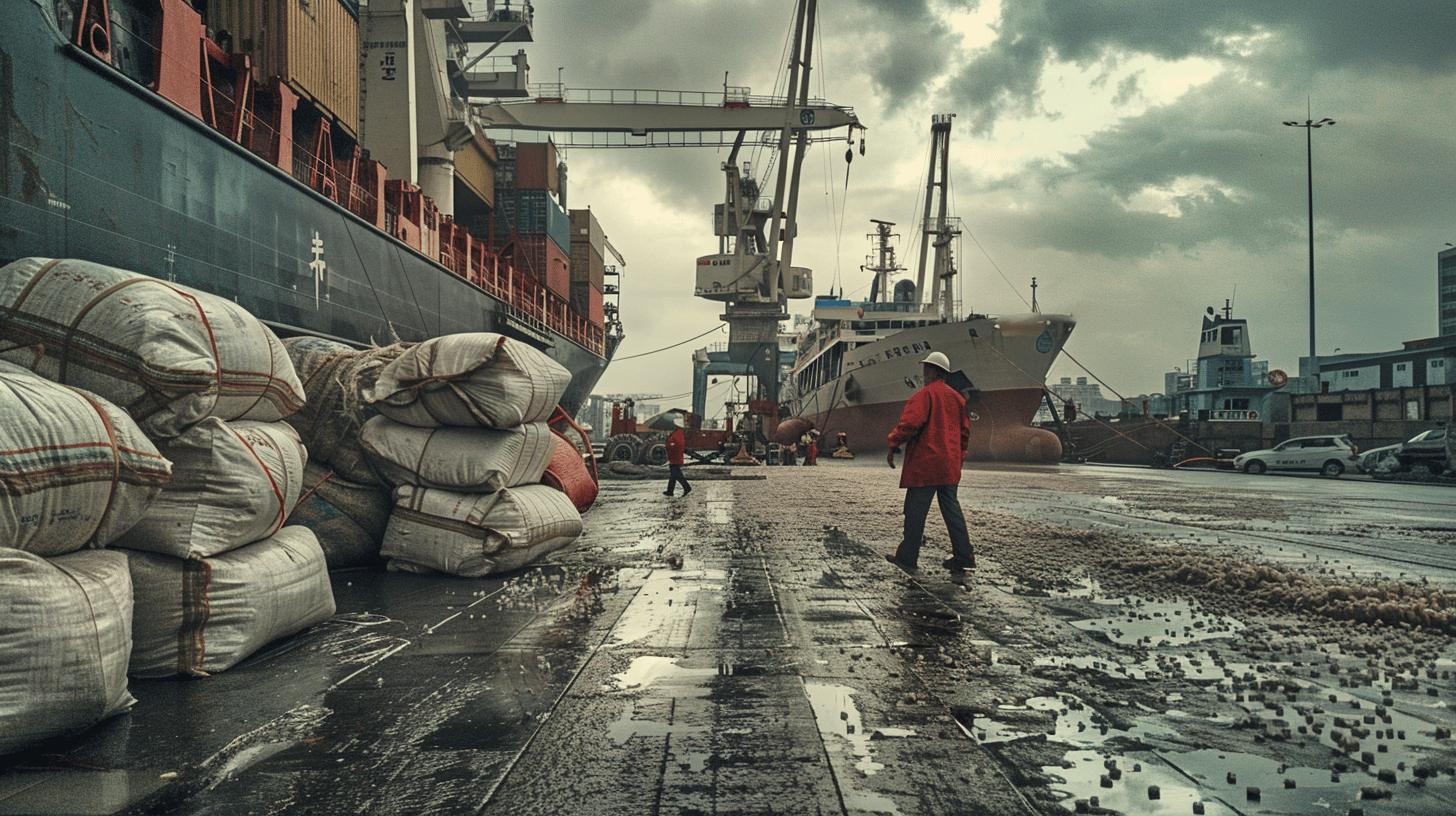Is navigating the labyrinthine world of Chinese import regulations giving you a headache? Importing sugar into China can be complex, filled with meticulous requirements and stringent standards that must be met. This article dives into the key regulations you need to know, from obtaining an import license to complying with food safety and labeling standards. By the end, you'll have a clear understanding of the steps necessary to ensure your sugar imports make it through customs without a hitch. Keep reading to simplify your import journey and secure your foothold in the Chinese market.
Overview of Import Regulations for Sugar in China
Compliance with Chinese regulations is essential for importing sugar into China. Importers must adhere to various rules and procedures to avoid penalties and ensure smooth operations. The regulatory framework encompasses multiple aspects, from obtaining licenses to meeting stringent food safety standards.
Specific requirements for importing sugar include adherence to China's food safety standards and quarantine requirements. Importers must ensure that all sugar products meet these standards to prevent contamination and ensure consumer safety. Additionally, labeling requirements mandate that all packaging information be provided in Chinese, including product name, ingredients, and manufacturer details. This helps in maintaining transparency and providing necessary information to consumers. Quarantine procedures are also critical, requiring thorough inspections to prevent the entry of pests and diseases.
Key regulatory agencies and their roles include:
- Ministry of Commerce (MOFCOM): Issues import licenses and oversees trade policies.
- General Administration of Customs of China (GACC): Manages customs procedures and enforces import regulations.
- Ministry of Agriculture and Rural Affairs: Sets agricultural product standards and quarantine requirements.
- China Food and Drug Administration (CFDA): Enforces food safety standards and labeling regulations.
- China Inspection and Quarantine (CIQ): Conducts inspections and quarantine processes at entry points.
Obtaining an import license from the Ministry of Commerce (MOFCOM) is crucial. Without this license, importers cannot legally bring sugar into China. The license process ensures that importers meet all regulatory requirements and maintain the integrity of the Chinese market.
Required Documentation for Sugar Import into China

Accurate documentation is crucial for importing sugar into China. Proper documentation ensures compliance with Chinese regulations, facilitates smooth customs clearance, and avoids potential delays or penalties.
Importers need to provide several key documents, including a bill of lading, commercial invoice, packing list, and certificate of origin. Obtaining an import license from the Ministry of Commerce (MOFCOM) is mandatory. Compliance with food safety standards and quarantine requirements is essential, as agricultural products like sugar may undergo additional inspections and quarantine procedures. Importers should also be aware of specific regulations related to genetically modified organisms (GMOs), if applicable. Each document plays a significant role in verifying the shipment's details and ensuring adherence to Chinese import laws.
| Document Type | Description |
|---|---|
| Bill of Lading | Provides detailed information about the shipment and the terms of transport. |
| Commercial Invoice | Lists the value and quantity of the sugar being imported. |
| Packing List | Details the contents of the shipment, including packaging information. |
| Certificate of Origin | Verifies the origin of the sugar, necessary for tariff and trade agreement purposes. |
Understanding Chinese Customs Procedures for Sugar Import
Customs declaration is a critical step in importing sugar into China. Importers must declare their goods at the port of entry by providing detailed information about the shipment. This process ensures that all regulatory requirements are met and helps facilitate smooth customs clearance.
The steps involved in customs clearance for sugar imports include preparing necessary documentation, submitting a customs declaration, and undergoing inspection and quarantine procedures. Importers need to be aware of the tariff information, as the tariff rate for sugar can vary based on the type and quantity of sugar being imported. After submitting the customs declaration, the shipment must pass through customs inspections, which may include checks for compliance with food safety standards and quarantine requirements. Importers may also need to provide samples for laboratory testing to ensure the sugar meets Chinese quality standards. Once the inspection is complete and any tariffs or duties are paid, the sugar can be released for distribution within China.
Key elements to consider during the customs clearance process:
- Documentation: Ensure all necessary documents, such as the bill of lading and commercial invoice, are correctly prepared.
- Tariff Rates: Be aware of the applicable tariff rates based on the type and origin of the sugar.
- Compliance: Make sure the sugar complies with Chinese food safety and quarantine standards.
- Inspection: Prepare for potential inspections and laboratory testing of the sugar.
- Payment: Pay any required tariffs or duties promptly to avoid delays.
- Regulations: Stay updated on any changes in Chinese customs regulations and trade policies.
Engaging professional services such as customs brokers and logistics companies can significantly ease the import process. These professionals have expertise in navigating the complexities of customs procedures and can help ensure that all requirements are met efficiently. By leveraging their knowledge and experience, importers can avoid potential pitfalls and expedite the clearance process, ensuring a smooth entry of sugar into the Chinese market.
Tariff Information and Import Costs for Sugar in China

Understanding tariff rates is crucial for importers looking to bring sugar into China. The tariff rate directly impacts the overall cost of the imported sugar and can vary widely. Knowing the applicable tariffs helps importers budget accurately and price their products competitively in the Chinese market.
Several factors influence tariff rates for importing sugar into China. These include the type of sugar being imported, its quantity, and its country of origin. For instance, white granulated sugar and raw sugar may have different tariff rates. Additionally, the Chinese government adjusts these rates based on specific trade agreements and market demands. Brazilian sugar, for example, often benefits from competitive pricing and lower tariffs due to favorable trade relations. Importers must stay informed about any changes in trade policies or tariff adjustments, as these can significantly affect the cost of sugar imports.
Trade agreements play a significant role in determining import costs. Agreements between China and sugar-exporting countries can lower tariff rates, making sugar imports more affordable. Conversely, changes in these agreements or the imposition of additional tariffs can increase costs. Importers should regularly review trade agreements and stay updated on any modifications to anticipate changes in import costs accurately.
| Type of Sugar | Tariff Rate | Origin |
|---|---|---|
| White Granulated Sugar | 20% | Brazil |
| Raw Sugar | 15% | Australia |
| Brown Sugar | 25% | Thailand |
| Refined Sugar | 18% | India |
Sourcing High-Quality Sugar for Import into China
Sourcing high-quality sugar is critical for meeting the increasing demand in China, driven by its growing population and expanding food industry. High-quality sugar is essential for ensuring product safety and consumer satisfaction. Importers should focus on sourcing sugar from reputable suppliers to maintain compliance with Chinese quality standards.
Certified suppliers offer several advantages. They provide assurances that the sugar meets stringent quality requirements and regulatory standards. Certified suppliers often have robust quality control processes, including regular testing and adherence to international standards. This reduces the risk of contamination and ensures that the sugar's purity and consistency are maintained. Importers should verify supplier certifications and request relevant quality assurance documentation, such as ISO certificates and food safety audits. Working with certified suppliers simplifies the import process and enhances the credibility of the imported sugar in the Chinese market.
Key factors to consider when verifying sugar quality:
- Certification: Ensure suppliers have recognized certifications like ISO or HACCP.
- Laboratory Testing: Request laboratory test results to verify sugar purity and quality.
- Traceability: Confirm the supplier's ability to trace the sugar's origin and production process.
- Compliance: Verify that the sugar complies with Chinese food safety standards.
- Reputation: Assess the supplier's reputation and reliability through industry feedback.
Brazilian sugar is particularly advantageous due to its competitive pricing and high-quality standards. Brazil is one of the world's largest sugar producers, offering a reliable supply of premium sugar. Importers benefit from favorable trade relations between China and Brazil, which often result in lower tariffs and reduced import costs. This competitive edge makes Brazilian sugar a preferred choice for importers seeking both quality and cost-efficiency.
Navigating Sugar Import Challenges and Compliance in China

Importing sugar into China involves several challenges that importers must navigate. Common issues include fluctuating trade policies, potential tariff increases, and stringent compliance requirements. Changes in trade policies, such as new tariffs imposed by China, can significantly impact the cost of imported sugar, making it more expensive and less competitive in the market.
Compliance requirements are critical for importing sugar into China. Importers must adhere to China's food safety standards, which are stringent and aim to ensure consumer safety. Sugar products must pass rigorous inspections and meet specific quality criteria. Additionally, labeling requirements mandate that all product information, including the name, ingredients, and manufacturer details, be provided in Chinese. Importers should also be aware of regulations related to genetically modified organisms (GMOs), as these can affect the importability and market acceptance of the sugar. Adhering to these compliance requirements helps prevent delays, avoid penalties, and ensures that the imported sugar can be legally sold in the Chinese market.
Strategies to manage risks and ensure compliance:
- Stay Informed: Keep up-to-date with changes in trade policies and tariff rates to anticipate cost implications.
- Quality Assurance: Ensure sugar meets Chinese food safety standards through regular testing and certification.
- Proper Labeling: Adhere to Chinese labeling requirements by providing accurate and complete information in Chinese.
- GMO Regulations: Verify that the sugar complies with China's GMO regulations to avoid import restrictions.
- Documentation: Maintain accurate and complete documentation to facilitate smooth customs clearance.
- Professional Services: Engage customs brokers and import consultants to navigate the complexities of the import process.
Engaging professional services such as customs brokers and import consultants is invaluable in navigating the import process. These professionals have the expertise and experience to handle the complexities of customs procedures, compliance requirements, and regulatory changes. By leveraging their knowledge, importers can mitigate risks, ensure compliance, and streamline the importation of sugar into China.
Final Words
Navigating the complexities of sugar import regulations in China involves a thorough understanding of compliance requirements set by multiple governing bodies. Accurate documentation, including import licenses and adherence to food safety standards, is crucial.
Customs procedures can be streamlined with the right knowledge and professional assistance. Tariffs and import costs also play a significant role, influenced by trade agreements and the origin of the sugar.
Sourcing from certified suppliers ensures product quality that meets stringent Chinese standards. Engaging with the right professionals and understanding these nuances can facilitate a smoother process to import sugar into China successfully.
FAQ
What is the import tax for sugar in China?
Import tax rates for sugar in China can vary based on the type and quantity of sugar being imported. The rate is also influenced by the origin of the sugar and specific trade agreements in place.
What is prohibited to import to China?
China prohibits importing items such as weapons, explosives, narcotics, counterfeit currency, printed material harmful to China’s politics, and certain endangered species and their products.
Who is the largest importer of sugar in the world?
China is one of the largest importers of sugar, but the leading importer position can shift between countries like Indonesia and the United States based on market demands and trade policies.
Can sugar be imported?
Yes, sugar can be imported into many countries, including China, where importers must comply with food safety standards, quarantine requirements, and obtain necessary import licenses.

